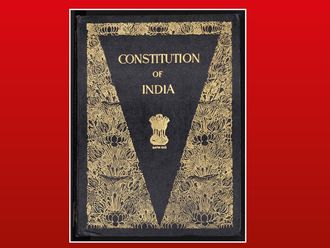We have been hearing lately about the possibility of the US withdrawal from the Middle East. The perception of American disengagement from the region has taken a life of its own. It is almost a cliche these days to repeat that America is about to downsize its presence and eventually quit the region. But talk aside, there is not one shred of credible evidence that points to an imminent American political or military withdrawal from the Arab Gulf and the Middle East at large.
The pundits insist that America’s withdrawal is more than a mere perception and the seeds are all over the place just waiting to germinate. The most compelling fact for the US scaling down its military and political interest in the Gulf is intrinsically linked to the sudden emergence of the energy-independent America. The vast shale oil and gas discovery is the new factor for seriously thinking to retreat from this region. Cheap oil was the main attraction and the oil-rich Gulf is no longer as attractive to America as it has been for the past 30 years.
There is also enough evidence to indicate that the US is actively redirecting its attention and resources to other regional and global hot spots. All eyes are now on China and the growing tensions in the Pacific region. The “pivot to Asia” policy announced by US President Barack Obama in 2012, was initially presented mainly by the Pentagon as a long-term thinking of where American power should be deployed overseas in the future. But that has taken a distinct diplomatic character lately.
Accordingly, many have assumed that the Arab Gulf region is the past whereas Asia is the future and the next top-priority for Washington. Furthermore, there are plenty of signs that American public is getting fed up with the Middle East and seems to succumb to a rising isolationist mood. A minimalist Obama is reinforcing this inward-looking tendency. He has been unnecessarily restrained on foreign policy and failed to exercise America’s global leadership at key moments. The most heartbreaking being the inaction in Syria, which is worse than George W. Bush’s action in Iraq. Obama was urged to act and he opted not to. What would Obama fight for? was the Economist cover story one month ago. No less than 60 per cent of the withdrawal perception is Obama’s doing. Probably the other 40 per cent is objectively a reflection of the waning America global power.
All of the above does not add up to a conclusive case for America’s strategic retreat from the region, argue the advocates of the ‘American withdrawal that wasn’t’. They say that the US cannot afford to quit the Middle East. This is one region that has the ability to force any superpower to pay attention to and being a global power, even if somewhat diminished, the US does not have the luxury of picking the region and the crisis to deal with. In addition, the Middle East has never been solely about oil. Even if America becomes totally energy independent, the security of Gulf oil remains a vital American interest. Oil is a political commodity that America needs to keep under its tight built.
And if that is not enough, American officials have for the past two years launched a public relations campaign to deny any hint of withdrawal and dispel any doubt about US credibility and reliability among its regional allies. They have emphasised, time and again, that the US is not leaving the region. US Sectary of Defence Chuck Hagel has said it, loud and clear, on so many occasions that Washington is firmly committed to this region. Obama reaffirmed solid US commitment to the security of Saudi Arabia and the small Arab Gulf States during his short, 24-hour visit to Riyadh. The fundamentals of the US-Arab Gulf states’ relationship seems very solid. America is selling more arms to the Gulf Cooperation Council than ever before.
As for the American public opinion and the current isolationist mood, everybody knows that the isolationist mood comes and goes in a cyclical fashion. America has been through it over Vietnam. It takes one major overseas event to change people’s opinion of America’s role in world affairs. The mood-swing to a more activist foreign policy is already underway in America — thanks mostly to Russian President Vladimir Putin’s aggressiveness in Ukraine. A new mood of internationalism is back and is being spearheaded by both moderate and hard-core Republicans who are critical of a feckless Obama.
However, the clearest policy sign for the no-withdrawal option is seen in the so-called Obama Doctrine for the Middle East. This was announced in Obama’s address to the United Nations General Assembly on September 24, 2013. At the time, the doctrine did not attract the kind of attention and analysis that one might have expected from what was, by any measure, a fundamental shift in US policy in a critical region of the world. The defining elements of the doctrine, as stated by Obama, are: 1. The US is prepared to use all elements of its power, including military force, to secure its core interests in the region. 2. It will confront external aggression against its allies and partners, as it had done during the Gulf War. 3. It will ensure the free flow of energy from the region to the world. 4. It will dismantle terrorist networks that threaten its people. 5. Finally, it will not tolerate the development or use of weapons of mass destruction.
The drivers of this doctrine comprise the core interests of the US. They are the objectives in this region to occupy the last three years of Obama’s presidency. Noticeably, there is no mention of Israel, security and lofty ideas such as democracy, human rights, free market or freedom. The conclusion to this fruitless ‘withdrawal-vs-no-withdrawal’ discourse is clear: America is not giving up on the Middle East and the Arab Gulf region. Do not bet one penny on it.
Dr Abdulkhaleq Abdulla is professor of political science. You can follow him on Twitter at www.twitter.com/Abdulkhaleq_UAE











